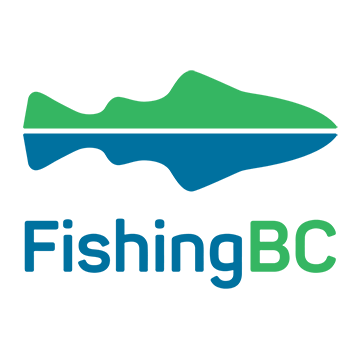More salmon facts
Learn about salmon conservation efforts made possible thanks to proceeds from the Salmon Conservation Stamp.
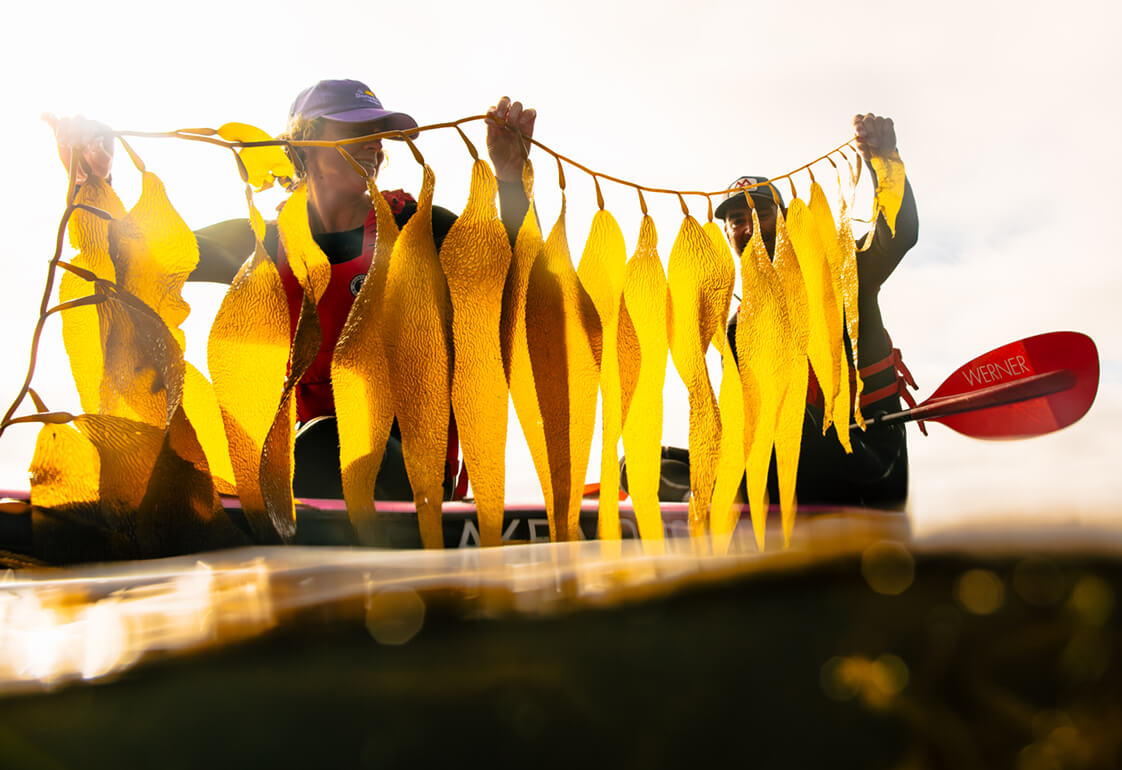
Millions of Young Salmon Rely on Kelp Forests
Every summer, millions of young salmon rely on kelp forests to hide from predators, rest, and forage for food — but in west Vancouver Island, these habitats are facing steep declines.
To understand what's happening, the Redd Fish Restoration Society is working with local First Nations governments to monitor kelp in Clayoquot and Barkley sounds. Their research will also help reveal when, where, and how juvenile salmon rely on kelp to survive.
The Pacific Salmon Foundation was able to support this project thanks to revenue from your $7.19 Salmon Conservation Stamp.
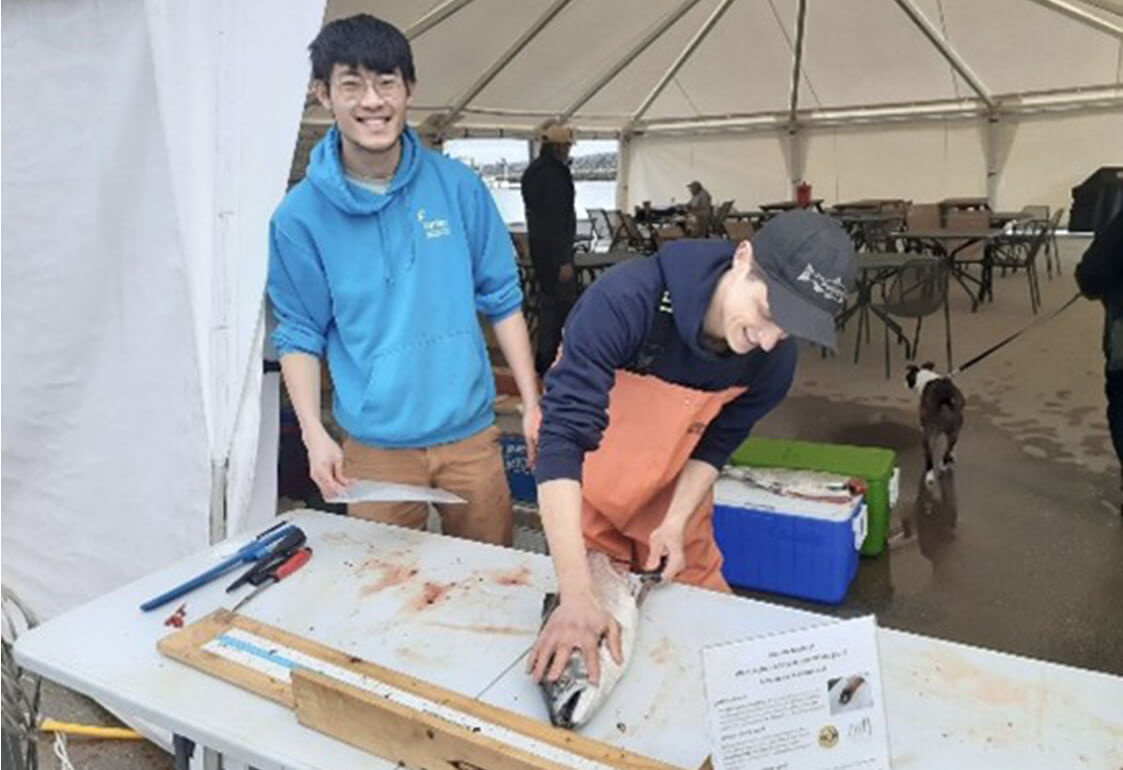
Thanks to Recreational Fishers, We Know More About Salmon
Thanks to recreational fishers, we know more about how salmon diets change with the seasons and across regions.
Since 2018, the Pacific Salmon Foundation has supported UVic researchers and students, working with 250+ local anglers, to collect and study 6,700+ stomachs from Chinook and coho salmon.
The findings can inform fisheries and habitat management to better protect the salmon food web.
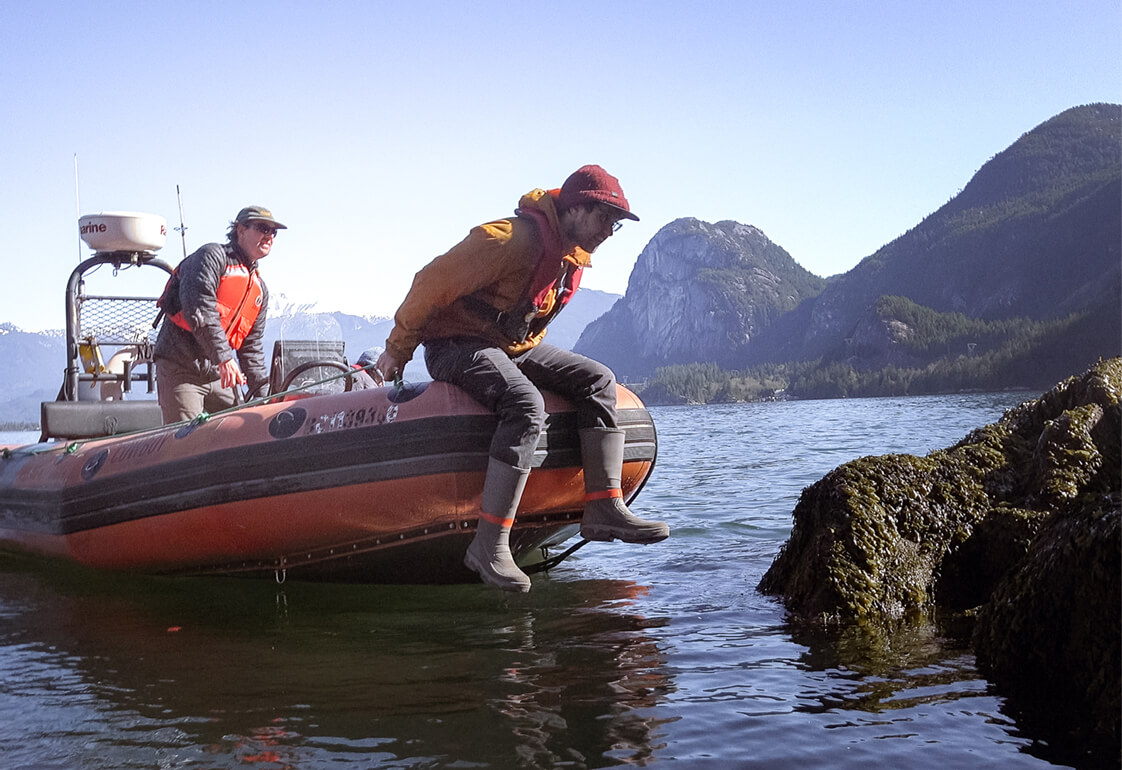
Herring are Vital to Salmon Survival
Did you know herring are vital to salmon survival? Both juvenile and adult salmon rely on them for food. In Howe Sound, herring habitat serves as a refuge for young coho and Chinook.
With support from the Pacific Salmon Foundation — thanks to your Salmon Conservation Stamp purchases — the Howe Sound Marine Stewardship Initiative and Squamish Nation Rights & Titles Department are expanding a long-term dataset on herring spawn timing, distribution, and abundance. This research is led by volunteers and helps guide local policy to protect fish habitat.
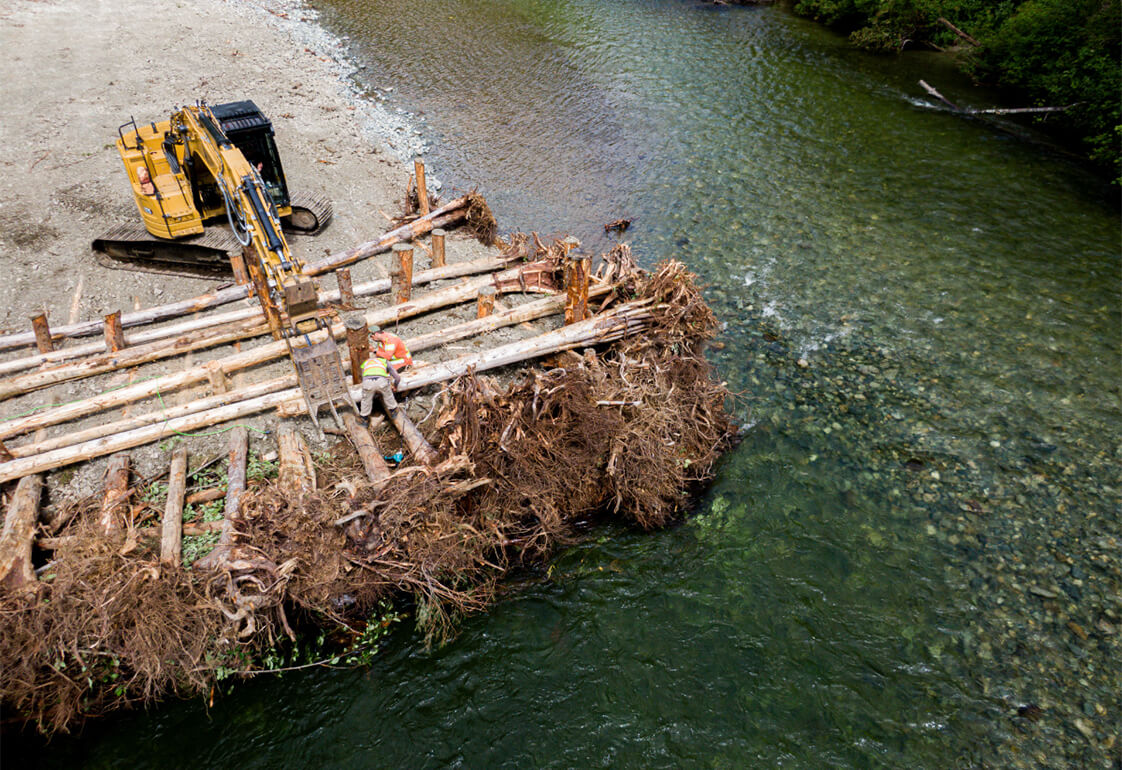
Securing Long-Term Habitat for Wild Salmon
A massive effort in Tranquil Creek, northeast of Tofino, is securing long-term habitat for wild salmon.
Over the past decade, the Tla-o-qui-aht First Nation and Redd Fish Restoration Society restored more than 80 hectares of habitat for chum, coho, and Chinook salmon by planting 800+ trees and installing close to 60 log jams. These “islands” provide shelter for salmon to rest and spawn, while also helping slow and store groundwater through hot summers.
This work was supported by nearly $300,000 in grants from PSF's Community Salmon Program — funded through your Salmon Conservation Stamp.
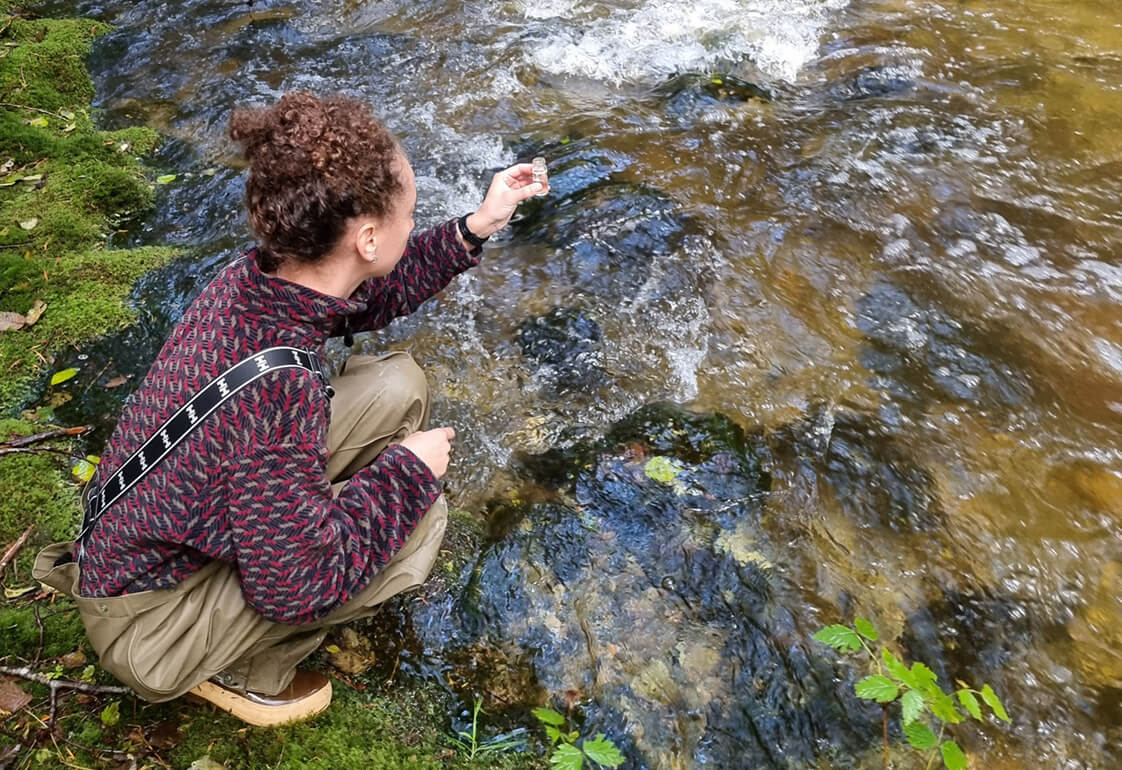
Local Stewards Help Prevent Salmon Habitat Degradation
More than 240 local stewards are supporting the Powell River Salmon Society's efforts to track threats to salmon in Lang Creek east of Powell River. Together, they're collecting data on environmental conditions and sharing it with local agencies to prevent salmon habitat degradation.
Thanks to Salmon Conservation Stamp funds, the Pacific Salmon Foundation supported the purchase of new mobile gear so volunteers can respond quickly to landslides, log jams, and runoff pollution.
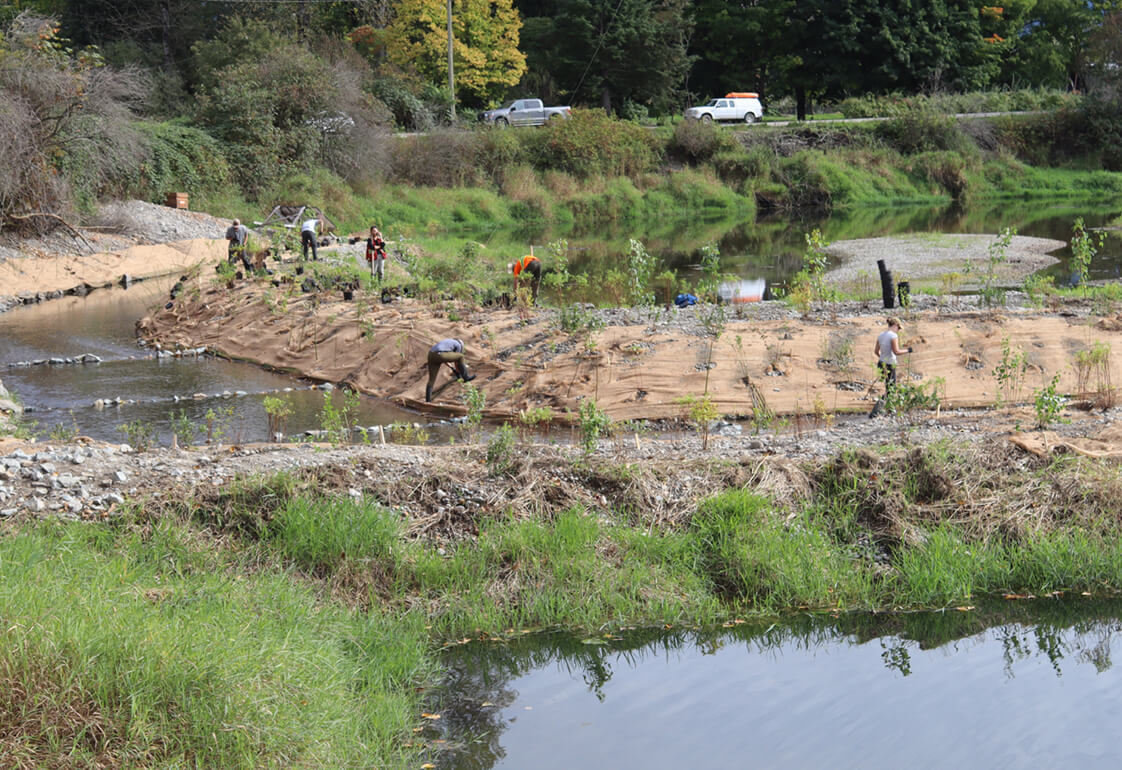
Enhancing Spawning Channels Gives Endangered Chinook a Lifeline
Last year was one of the strongest Chinook salmon returns in a decade for the Sq’éwqel (Seabird Island Band) near Agassiz following years of restoration work at Maria Slough.
Now, with a new grant from the Pacific Salmon Foundation, the team is enhancing nearby spawning channels to give endangered Chinook a lifeline. Once complete, these channels will keep water cooler, oxygen-rich, and flowing longer through drought.
Projects like this are made possible thanks to proceeds from the Salmon Conservation Stamp.
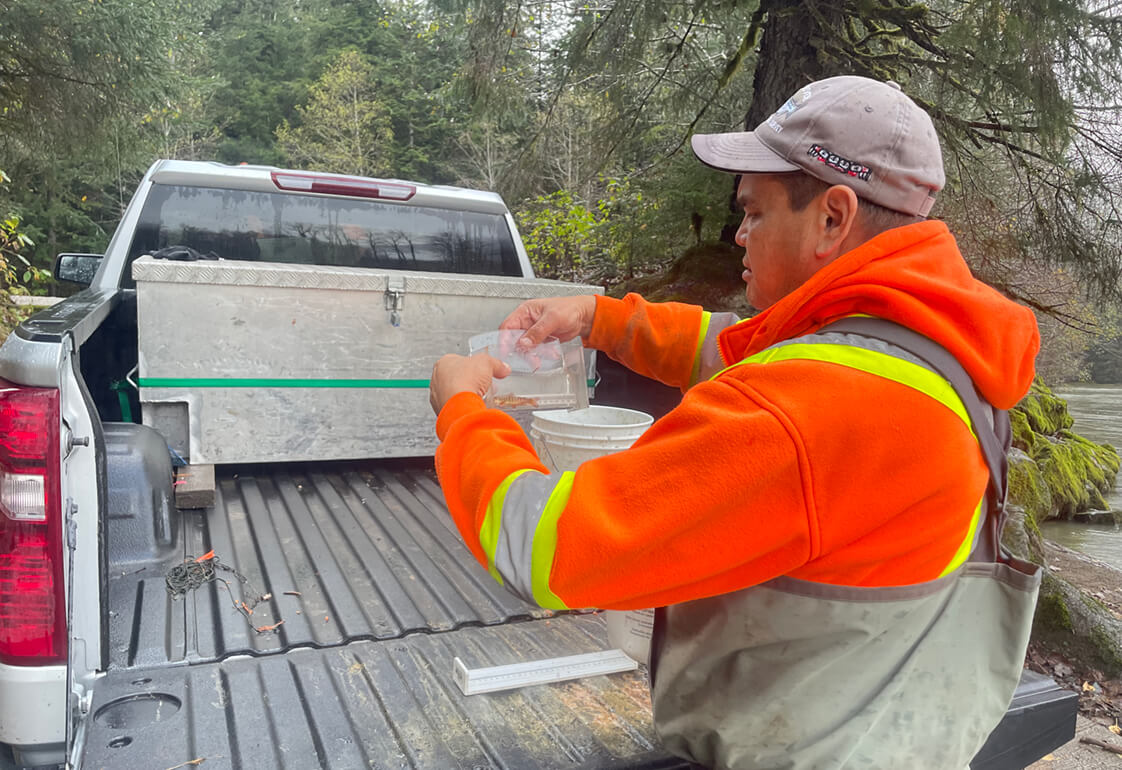
New Stream Channels can Prevent Future Strandings
In the Skeena River near Terrace, the Kitsumkalum Band used to rescue around 3,000 stranded young coho after high water flows every spring.
With support from the Pacific Salmon Foundation, they built a new stream channel to reconnect ponds to the river and prevent future strandings. Kitsumkalum has leveraged $13,000+ in grants to enhance the channel and create new spawning habitat for salmon.
Funds for this project were made available through the sale of your Salmon Conservation Stamp.
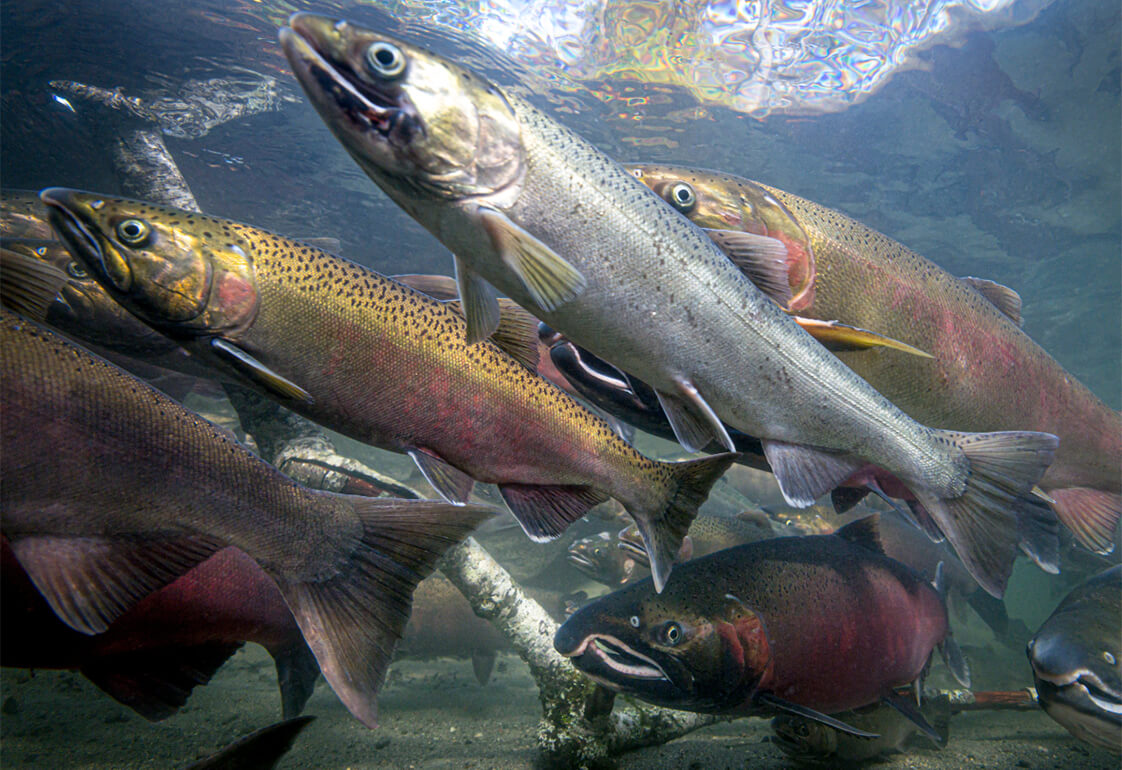
What We Know About Salmon in the Fraser
What do we know about salmon in the Fraser?
Fraser River coho are seeing their strongest returns since before the 1990s crash, a hopeful sign that conservation measures may be paying off.
But recent sockeye declines — even after a major spike and fishery reductions in the 2010s — highlight how fragile and unpredictable recovery can be. Meanwhile, steelhead and chum remain well below historic levels.
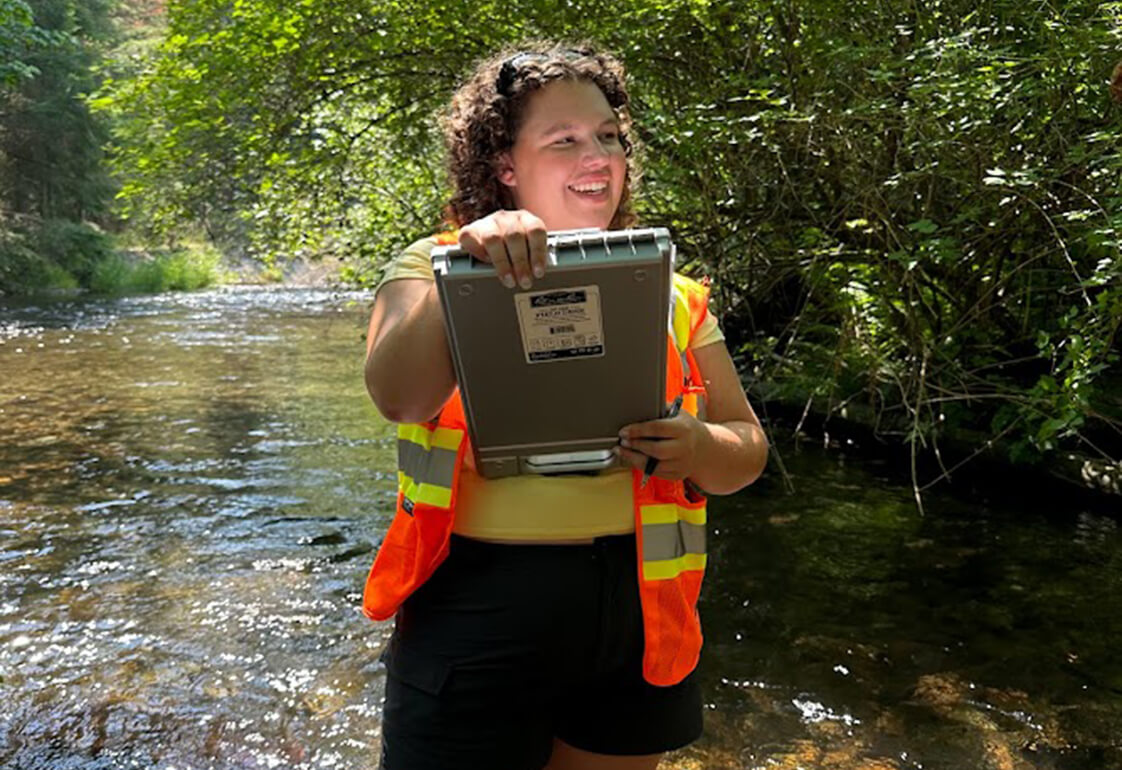
Healthy Habitat is Critical for Young Salmon
Healthy habitat is critical for young salmon to survive — and your Salmon Conservation Stamp dollars are helping local stewards restore it. With a $6,880 grant, the Pacific Salmon Foundation is supporting the Alouette River Management Society to engage 50+ volunteers in hands-on restoration.
The crew was able to remove invasive grass, clear sediment, and add large woody debris to improve rearing habitat for salmon in the Alouette Watershed near Maple Ridge.
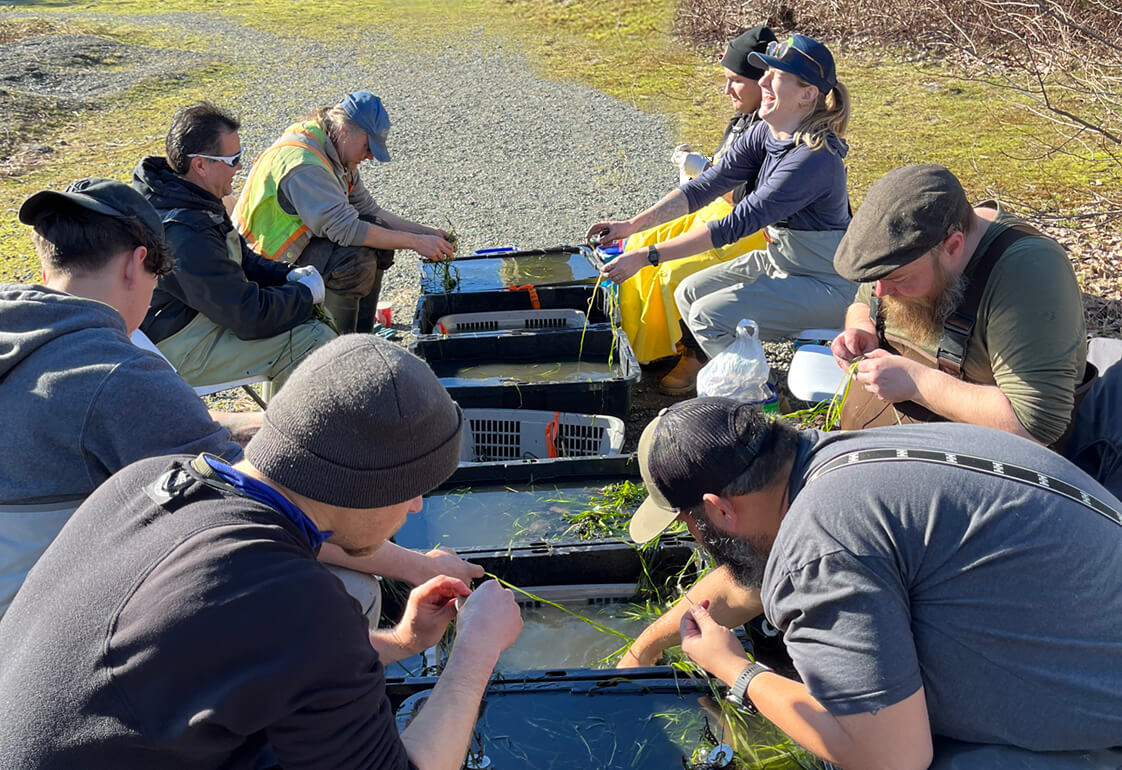
Eelgrass Meadows Shelter Juvenile Salmon
In the Campbell River Estuary, the Wei Wai Kum First Nation and Greenways Land Trust are expanding efforts to restore critical habitat for young chum and Chinook salmon. The eelgrass meadows they're replanting offer shelter and feeding grounds that help juvenile salmon survive their early ocean journey.
Thanks to Salmon Conservation Stamp funds provided by the Pacific Salmon Foundation, the team is building on past work — aiming to restore 6,000 square metres in Mill Pond by the end of 2025.
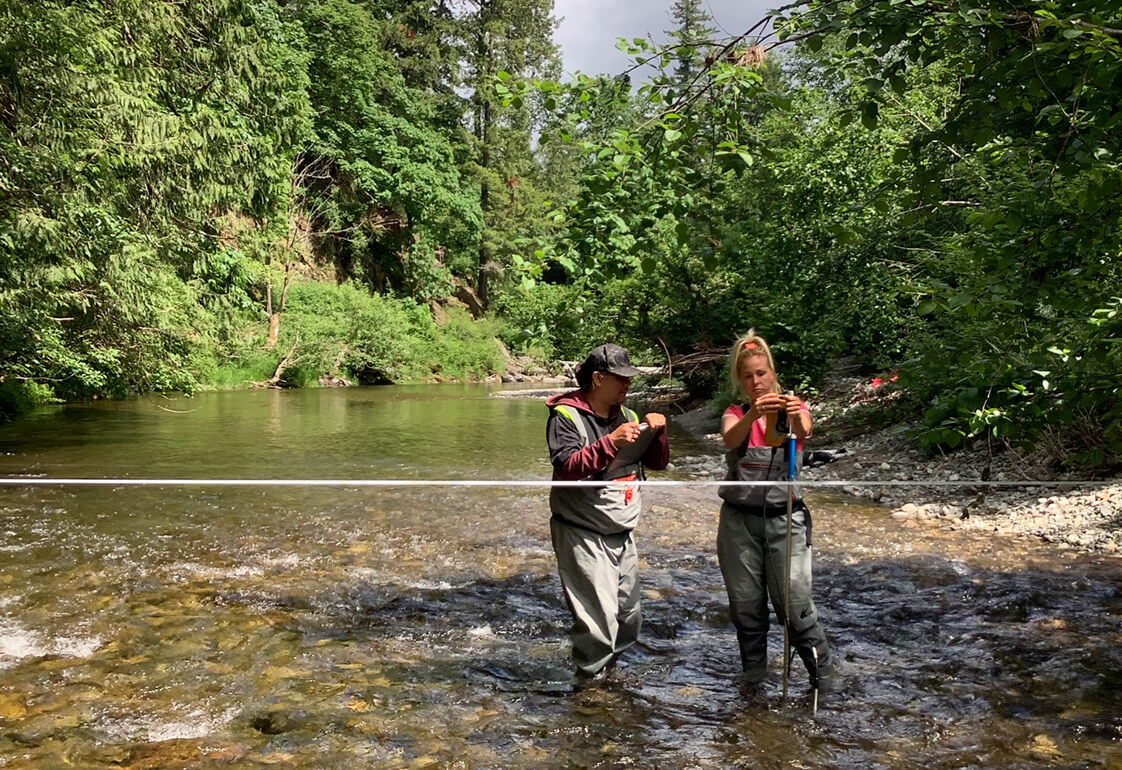
Continued Collaboration Remains Key
Chinook in the Cowichan River were on the brink of extinction in 2009. Thanks to recovery efforts led by Cowichan Tribes, the Cowichan Valley Regional District, and community leaders, the region is now seeing record Chinook returns.
Still, recent die-offs of young Chinook during extreme drought point to a tough road ahead. Continued collaboration remains key for local stewards to tackle the challenges brought on by climate change.
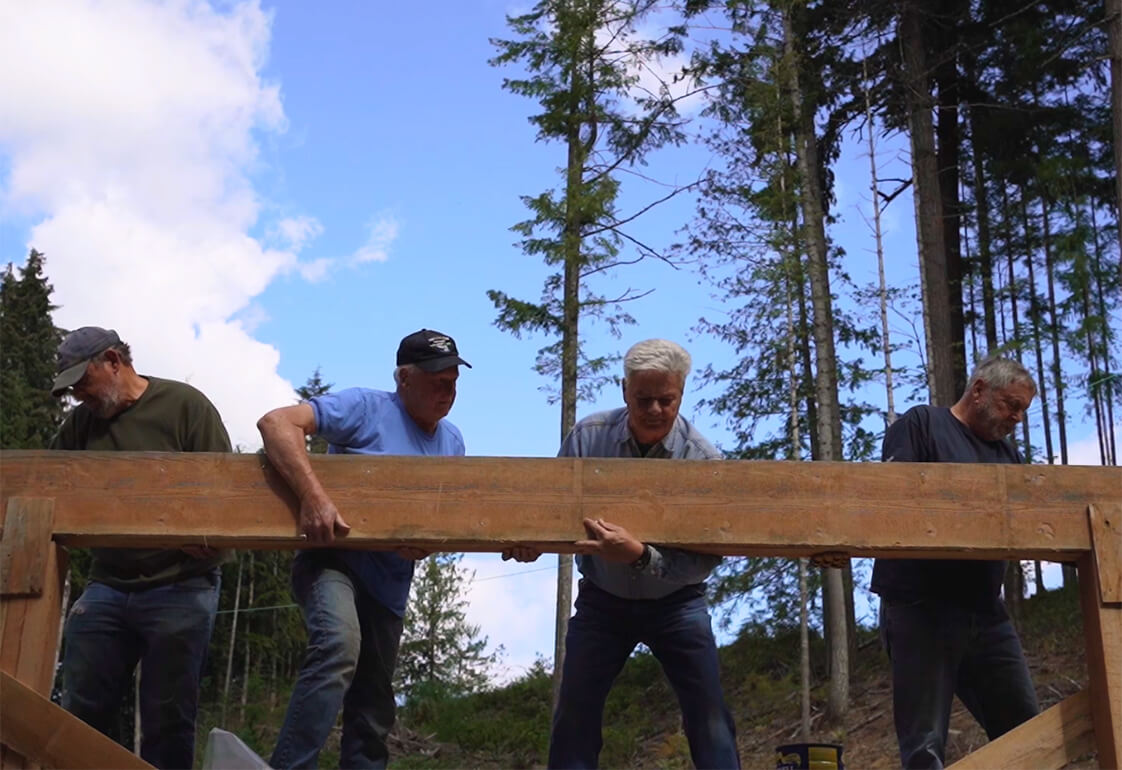
Climate-Smart Upgrades are Helping Fish Adapt
The new Courtney Fish & Game club hatchery is helping young Chinook and coho survive extreme heat by drawing cold water from Lake Comox. Volunteers are now adding an emergency refuge pond to protect wild salmon during dry spells.
These climate-smart upgrades show how local stewards are helping fish adapt. Nearly $100,000 in grants from the Pacific Salmon Foundation — made possible by your Salmon Conservation Stamp purchases — funded this work.
Salmon facts: did you know...?
If you notice drought conditions affecting salmon in your area, you can log them using the Pacific Salmon Foundation's drought reporting tool at PSF.ca. Together, we can help salmon by keeping more eyes on the ground.
AI tech and underwater cameras are being used to count and identify Pacific salmon as they return to spawn! This real-time data can help inform in-season decisions on harvest and management.
How is drought impacting creeks near you? Hotter, drier summers driven by climate change are increasingly pushing water temperatures past 18°C — the danger zone for Pacific salmon.
Did you know the Salmon Conservation Stamp generates around $1.5 million every year! The Pacific Salmon Foundation stewards these funds to support 150+ local salmon conservation projects across BC and the Yukon.
Less than 30 years ago, Columbia sockeye faced extinction. Thanks to community-driven efforts, we saw record Okanagan sockeye returns in 2022 and signs point to a lasting recovery.
Whirling disease can kill juvenile salmon and was recently detected in Kootenay Lake, BC. The best way to combat its spread is to clean, drain and dry boats and equipment when transferring between water bodies this summer!
Good news! Fraser and Vancouver Island Chinook are on the road to recovery. But salmon are complex — some Chinook in these regions remain endangered, and there's still important work to be done.
Adult Pacific salmon can swim over 50 kilometres a day on their journey home to spawn. But warming waters, pollution, barriers to fish passage, and other threats are making this daily marathon even more difficult.
Canada Geese overgraze critical salmon habitat in southern Vancouver Island estuaries. Thanks to Salmon Conservation Stamp funds, local groups are protecting these areas with goose-proof fencing.
Did you know? BC is home to 9,000+ salmon populations. While some migrate together, each is uniquely adapted to survive the challenges of its own migration route and home stream.
BC's Family Fishing Weekend introduces young people to salmon and angling every June. Thanks to Salmon Conservation Stamp funds, the Pacific Salmon Foundation has supported 15 celebrations.
Where do Salmon Conservation Stamp dollars go? Since 1994, the Pacific Salmon Foundation has leveraged these funds to invest $31M+ in local salmon stewardship projects across BC and the Yukon. Not bad for a $7.19 stamp!
Chum and steelhead are struggling the most across all salmon species in BC, according to the Pacific Salmon Foundation's State of Salmon report. But rebounds in other species show recovery is possible if salmon are given the opportunity.
The North Shore Streamkeepers leveraged $150,000+ in grants to restore salmon habitat at Lynn, Mosquito, and MacKay Creeks in North Vancouver. This work was funded through the Pacific Salmon Foundation with Salmon Conservation Stamp funds.
A toxin called 6PPD-quinone can leach off car tires into streams and kill coho salmon. This year, local stewards across BC are building dozens of rain gardens to filter toxic road runoff and protect salmon habitat.
Eye injuries reduce a salmon's chances of surviving catch-and-release. Using smaller hooks makes these injuries less likely and increases survival.
Did you know that even “fish-friendly” nets can split salmon fins and remove their protective scales and mucous? Avoiding landing nets during catch-and-release gives fish a better chance of survival.
Think about skipping the flasher! The added drag can leave salmon exhausted and more vulnerable to predators after catch-and-release.
Did you know that salmon have ear bones? Hatchery coho are more likely to have abnormal ear bones than wild coho, which could be linked to their lower survival rates.
Where does all the revenue from the Salmon Conservation Stamp go? In the last 35 years, the Pacific Salmon Foundation has distributed $31 million in grants to 3,500+ local stewardship projects.
Looking for simple ways to help salmon? When cleaning your boat,
consider avoiding products that contain chlorine and petroleum
distillates, as these can harm fish.
Dozens of volunteer citizen scientists went boating in the Strait of Georgia to collect ocean data as part of a Pacific Salmon Foundation initiative. This data helps us understand what affects the salmon food web.
What makes a salmon survivor? Along east Vancouver Island, the Pacific Salmon Foundation, partners, and local stewards are now tracking the return of over 2,500 of the 300,000+ salmon tagged in the past four years.
What people are saying about FishingBC:
“Just got the app and it is going to be very useful. Super easy to look up regulations. Awesome to have my license on my phone.”
Myles Stoesz
“Going to be great. Scanned my license in easily. Took a look through the regs and found the app to be really quick and easy to use. Lots of useful info!”
Andrew Mallory
Need some help?
Check out our Frequently Asked Questions and videos, or reach out to us by email, we're happy to help.
If you have questions or concerns about Licensing or Regulations please email the DFO directly:
